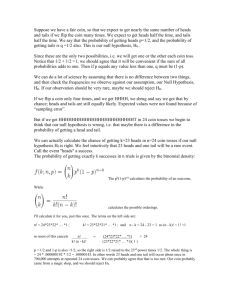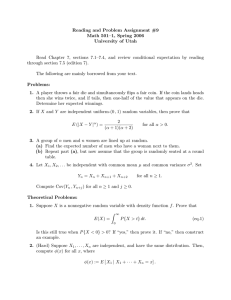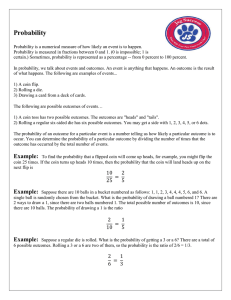Statistical evidence evaluation Exercises 1
advertisement
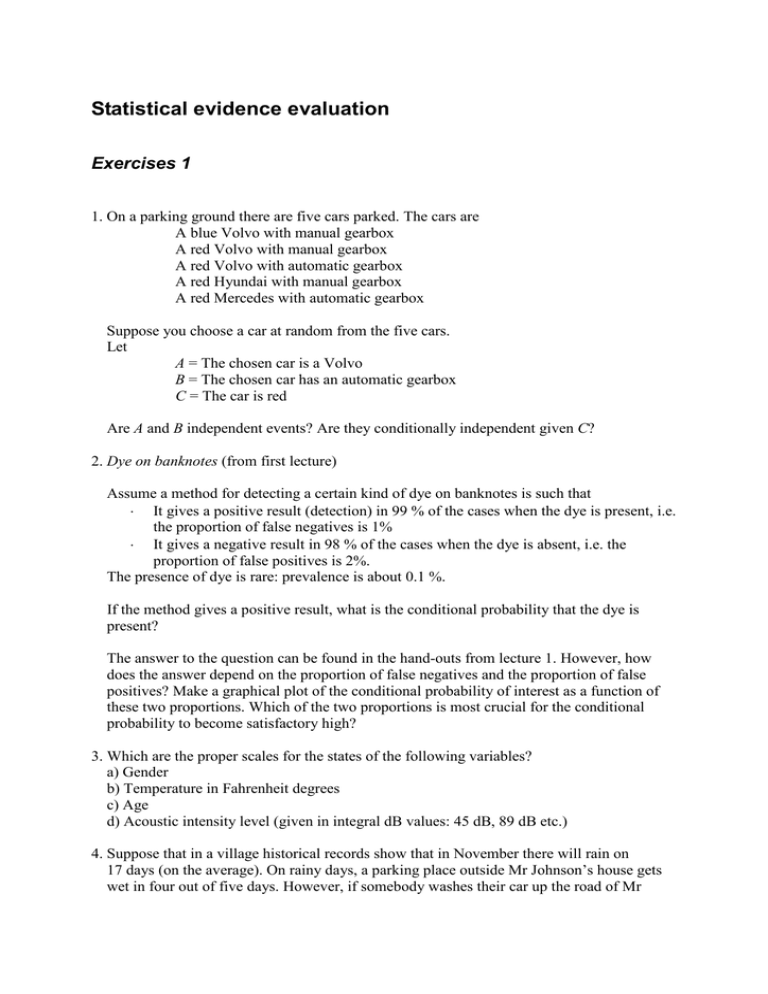
Statistical evidence evaluation Exercises 1 1. On a parking ground there are five cars parked. The cars are A blue Volvo with manual gearbox A red Volvo with manual gearbox A red Volvo with automatic gearbox A red Hyundai with manual gearbox A red Mercedes with automatic gearbox Suppose you choose a car at random from the five cars. Let A = The chosen car is a Volvo B = The chosen car has an automatic gearbox C = The car is red Are A and B independent events? Are they conditionally independent given C? 2. Dye on banknotes (from first lecture) Assume a method for detecting a certain kind of dye on banknotes is such that ⋅ It gives a positive result (detection) in 99 % of the cases when the dye is present, i.e. the proportion of false negatives is 1% ⋅ It gives a negative result in 98 % of the cases when the dye is absent, i.e. the proportion of false positives is 2%. The presence of dye is rare: prevalence is about 0.1 %. If the method gives a positive result, what is the conditional probability that the dye is present? The answer to the question can be found in the hand-outs from lecture 1. However, how does the answer depend on the proportion of false negatives and the proportion of false positives? Make a graphical plot of the conditional probability of interest as a function of these two proportions. Which of the two proportions is most crucial for the conditional probability to become satisfactory high? 3. Which are the proper scales for the states of the following variables? a) Gender b) Temperature in Fahrenheit degrees c) Age d) Acoustic intensity level (given in integral dB values: 45 dB, 89 dB etc.) 4. Suppose that in a village historical records show that in November there will rain on 17 days (on the average). On rainy days, a parking place outside Mr Johnson’s house gets wet in four out of five days. However, if somebody washes their car up the road of Mr Johnson’s house the parking place may also be wet. This happens roughly in 50 % of the cases. We assume that nobody will wash their car on a rainy day in November, and we also assume there could be no further explanation to why the parking place is wet. Now, assume that on one November evening it is not raining (for the moment). If you observe that the parking place outside Mr Johnson’s house is wet, what is the likelihood that it has rained that day? What can you say about the posterior probability that it has rained that day? 5. A fair coin should have equal probabilities to land on each side when tossed. We may for simplicity set this probability to 0.5 (assuming it cannot land end-ways). A specific coin is assumed to have been manipulated so that the probability of obtaining heads is 0.6 instead of 0.5. Suppose you toss the coin 5 times and obtain heads in four of these cases. What is the Bayes factor in testing the hypothesis “The coin is fair” against the hypothesis “The coin has the probability 0.6 to give heads when tossing” ? 6. Consider the coin in the previous exercises. If the coin is manipulated to give heads more often than tails any probability of heads larger than 0.5 would do. Assume we have no particular reason to believe that some probabilities (above 0.5) would be more probable than others. For the same experiment as in exercise 5, what is the Bayes factor in testing the hypothesis “The coin is fair” against the hypothesis “The coin is manipulated to give more heads than tails on the average”. 7. Suppose we suspect that a particular screwdriver was used to break a lock on a door. Some other information tells us it must have been a screwdriver (unrealistic, but just to simplify). Suppose further that the particular type of screwdriver would leave precisely those marks on the lock that have been observed. This type of screwdriver constitutes about 1 % of all screwdrivers on the market. Among the rest of the screwdrivers on the market it is appreciated that 0.02 % of them would leave such marks as have been observed. What is the Bayes factor in testing the hypothesis “The particular screwdriver was used to break the lock” against the hypothesis “Another screwdriver was used to break the lock”?

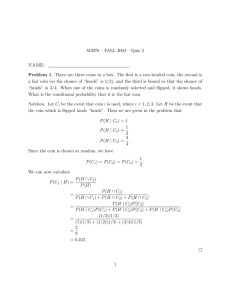
![MA1S12 (Timoney) Tutorial sheet 9c [March 26–31, 2014] Name: Solution](http://s2.studylib.net/store/data/011008036_1-950eb36831628245cb39529488a7e2c1-300x300.png)

